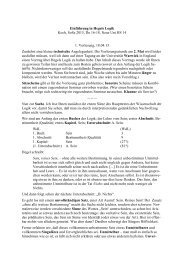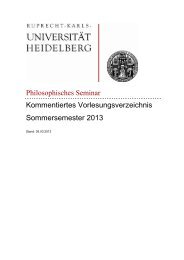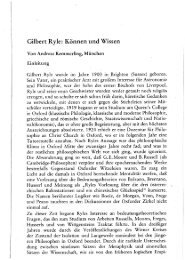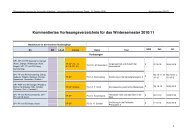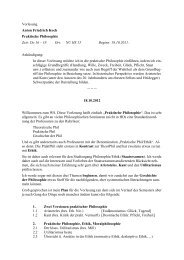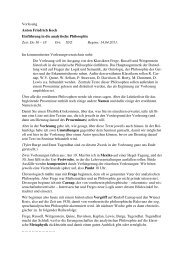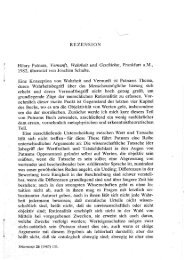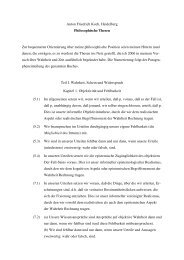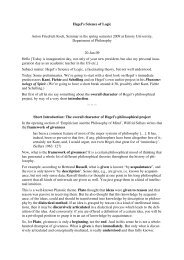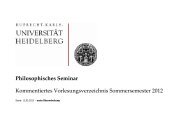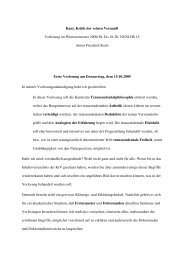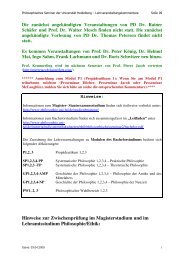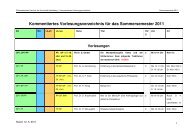KANT'S CRITIQUE OF TELEOLOGY IN BIOLOGICAL EXPLANATION
KANT'S CRITIQUE OF TELEOLOGY IN BIOLOGICAL EXPLANATION
KANT'S CRITIQUE OF TELEOLOGY IN BIOLOGICAL EXPLANATION
You also want an ePaper? Increase the reach of your titles
YUMPU automatically turns print PDFs into web optimized ePapers that Google loves.
Regulative and Constitutive 159<br />
occasion to the various misunderstandings dealt with in the last<br />
section. The question however arises: If this second pair of opposites<br />
cannot in fact be part of the antinomy, why then did Kant connect it<br />
so closely to the formal presentation of the antinomy? The answer<br />
lies, I believe, in Kant's attempt to integrate the various philosophical<br />
positions about the organism expounded by his predecessors in<br />
science and philosophy into the construction of the antinomy. In fact<br />
in §§72-74 Kant reports and criticizes four different "systems about<br />
the purposiveness of nature," which (compressed of course into two<br />
conflicting basic positions) are supposed to cover the entire spectrum<br />
of previous theories. These systems, which all propund<br />
mechanistic theories, assert or deny on this background the purposiveness<br />
of the organism and of nature as a whole. Each of these<br />
positions presupposes in a pre-critical form one of the constitutive<br />
principles (C1, C2). Since the opposition of the two maxims (R1, R2)<br />
does not present an antinomy of pre-critical positions but rather one<br />
that arises within the critical system itself, the pre-Kantian<br />
positions can only be introduced as the transformation of critical<br />
maxims into constitutive principles. In this manner the parallels of<br />
content between pre- and post-critical positions can be made clear,<br />
although the maxims (R1, R2) of the antinomy are not merely the<br />
regulative reflections of these constitutive principles. The relation<br />
between the two pairs is more complicated than it appears on first<br />
sight.<br />
Kant compresses four philosophical systems into two conflicting<br />
basic positions: The so-called idealism of purposiveness<br />
(Epicurean accident and Spinozist fatality) conceptualizes the purposiveness<br />
of nature as unintentional; the so-called realism of purposiveness<br />
(hylozoism and theism) comprehends the purposiveness<br />
of nature as intentional. Using these two basic positions, Kant plays<br />
through a kind of pseudo-antinomy: idealism is the assertion that<br />
all purposiveness of nature is unintentional; realism asserts that<br />
some purposiveness of nature is intentional. He then argues that<br />
both sides cannot prove their assertions. As dogmatic or constitutive<br />
assertions they cannot even guarantee the objective reality of the<br />
purposiveness itself, which they maintain is intentional or unintentional.<br />
This explains why all the systems that might be devised to treat dogmatic<br />
ally the concept of natural purposes and the concept of nature as a whole<br />
having coherence in terms of final causes cannot decide anything whatsoever<br />
by way of either objective affirmation or objective negation. For if we



